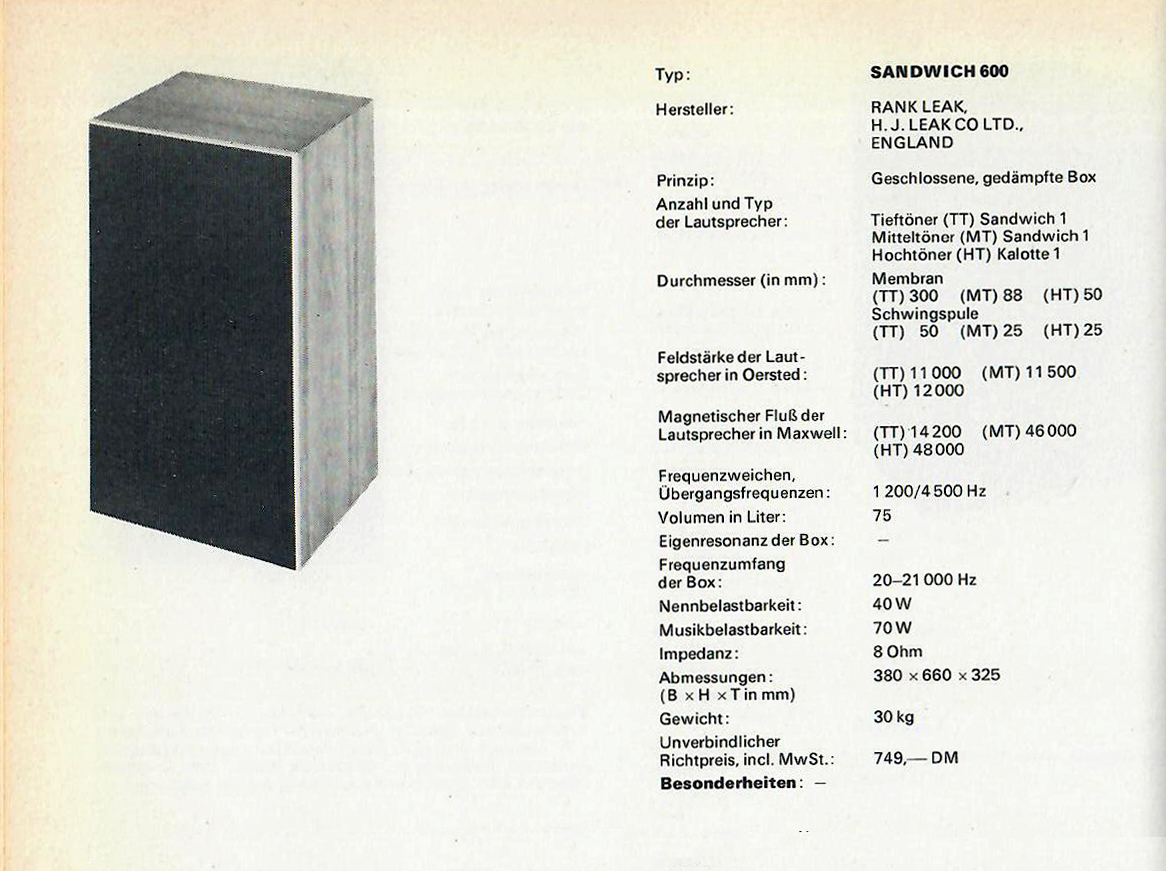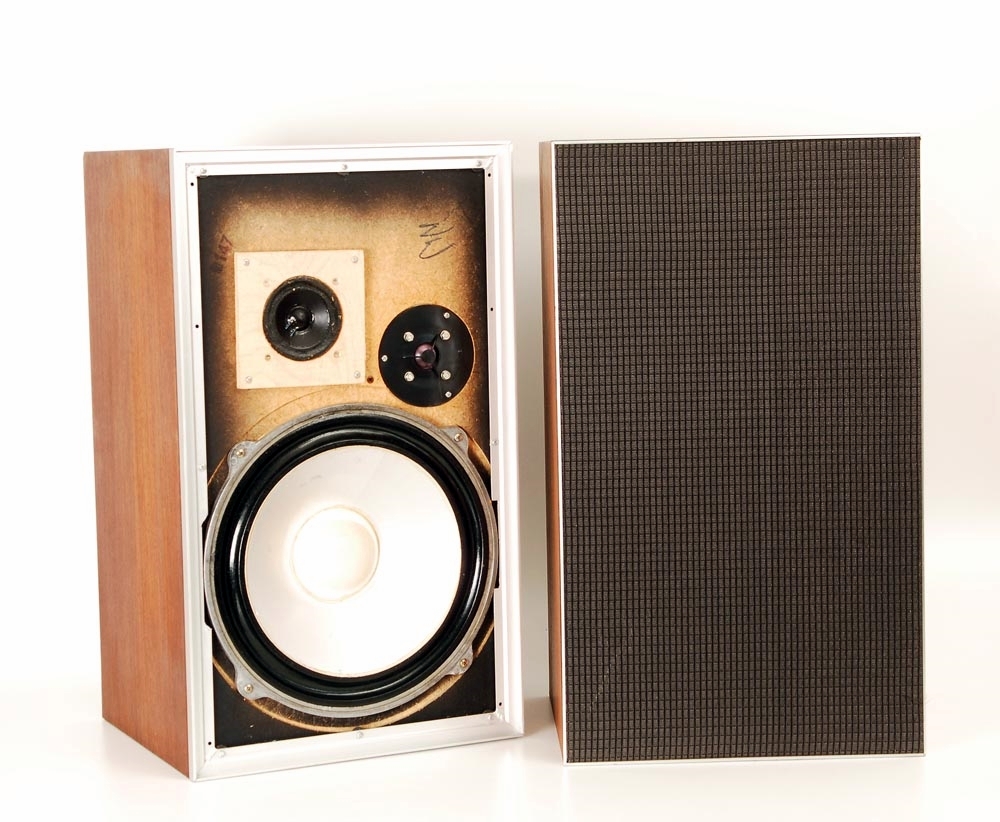Leak Sandwich 600
Data
General
- Manufacturer: Leak
- Model: Sandwich 600
- Type: Loudspeaker
- Years of manufacture: 1972 - 1975
- Made in: England
- Color: Walnut
- Original price approx.: 749 DM
Technical data
Remarks
- Other models in the same series:
- Leak Sandwich 150
- Leak Sandwich 200
- Leak Sandwich 250
- Leak Sandwich 300
- Leak Sandwich 600
Pictures
- Image: Leak Sandwich 600
Reviews
- In 1961 Leak released a revolutionary loudspeaker design that gave true piston action of the cone. This was the leak "Sandwich" loudspeaker, so named because the diaphragm was made from a thick section (approx 10mm) of expanded polystyrene sandwiched between two outer skins of aluminium.
The sandwich diaphragm was the result of work undertaken by D.A.Barlow at the Banbury Aluminium Development Laboratory. Barlow published a paper in Wireless World (December 1958) which suggested that benefits might be gained from the use of foil-stressed diaphragm in loudspeakers. Leak engaged Barlow to head the development of a production loudspeaker based on these principles.
The following text is taken from company literature of the day:
- "To understand the impact of this invention one must remember that to obtain low distortion the movement of a loudspeaker diaphragm or cone should follow as accurately as possible the waveform of the signals present applied to its speech coil. The ability of the cone to follow these impulses depends on the lightness as well as stiffness of the cone assembly.
"Conventional cones (paper, impregnated fabric, plastics, aluminium) suffer from low stiffness. This results in significantly large areas of the cone vibrating in motions uncontrolled by the speech coil. The uncontrolled motions produce transient "hangover", amplitude distortion, and intermodulation distortion. These shortcomings are inherent in all direct radiator loudspeaker systems using conventional cones, irrespective of cost. "All of the above shortcomings of conventional cone loudspeakers are overcome by the Leak Piston-Action Sandwich construction. Using engineering principles as applied to airframe construction, the "Sandwich" cone comprises stiff aluminium skins for the outer surface where stresses are greatest, bonded to a thick core of featherweight expanded aluminium where stresses are lowest, giving far greater stiffness than the same total weight of either material used separately. This use of the most suitable material in optimum proportions and dispositions gives immense stiffness and rigid piston-action over a range of more than 6 octaves. The illustration at the right shows a later model Leak 600 Sandwich speaker of three-way design photographed as installed for monitoring at the ABC radio studios in Australia. The original Sandwich loudspeaker was a two-way system with a 13-inch woofer mounted in a damped, sealed cabinet of approximatley 2 cubic feet. The free-air resonance of the woofer was a low 19Hz, but when mounted the system resonance was 58Hz. The suspension of the woofer featured a cambric roll-surround which allowed for a low resonance and long throw. The system crossover frequency was 900 Hz. The treble unit was approximatley 3 inches in diameter and also featured a sandwich diaphragm (although early units appear to have had a fibre-cone tweeter). The loudspeaker cabinet for the sandwich system featured some novel design features also. The cabinet walls were only 12mm thick, but were very heavily damped with a similar thickness of bituminous lining. The magnet of the woofer was rigidly attached to the rear wall of the cabinet, thus increasing cabinet rigidity. Leak had considerable success with the Sandwich loudspeaker, with it being used extensivley in the professional audio industry and in homes both in Britain and overseas. Auditioning these speakers today shows some obvious limitations in the treble performance of the system, although later three way designs would have been better in this regard. The marketing of the Sandwich system produced some interesting photographs, two of which are shown above. Harold Leak is shown standing on a plate glass sheet which in turn is sitting on top of the apex of a Sandwich woofer cone. In the other photo, the immense stiffness of the Sandwich cone material is demonstrated by placing 100 half-pennies on it, and comparing it to paper cone material of the same weight with just one half-penny.
- H. J. LEAK & CO. LTD.
- Designers and Manufacturers of Specialised Electronic Instruments for the Communications Industries
- BRUNEL ROAD * WESTWAY FACTORY ESTATE * LONDON, W3

